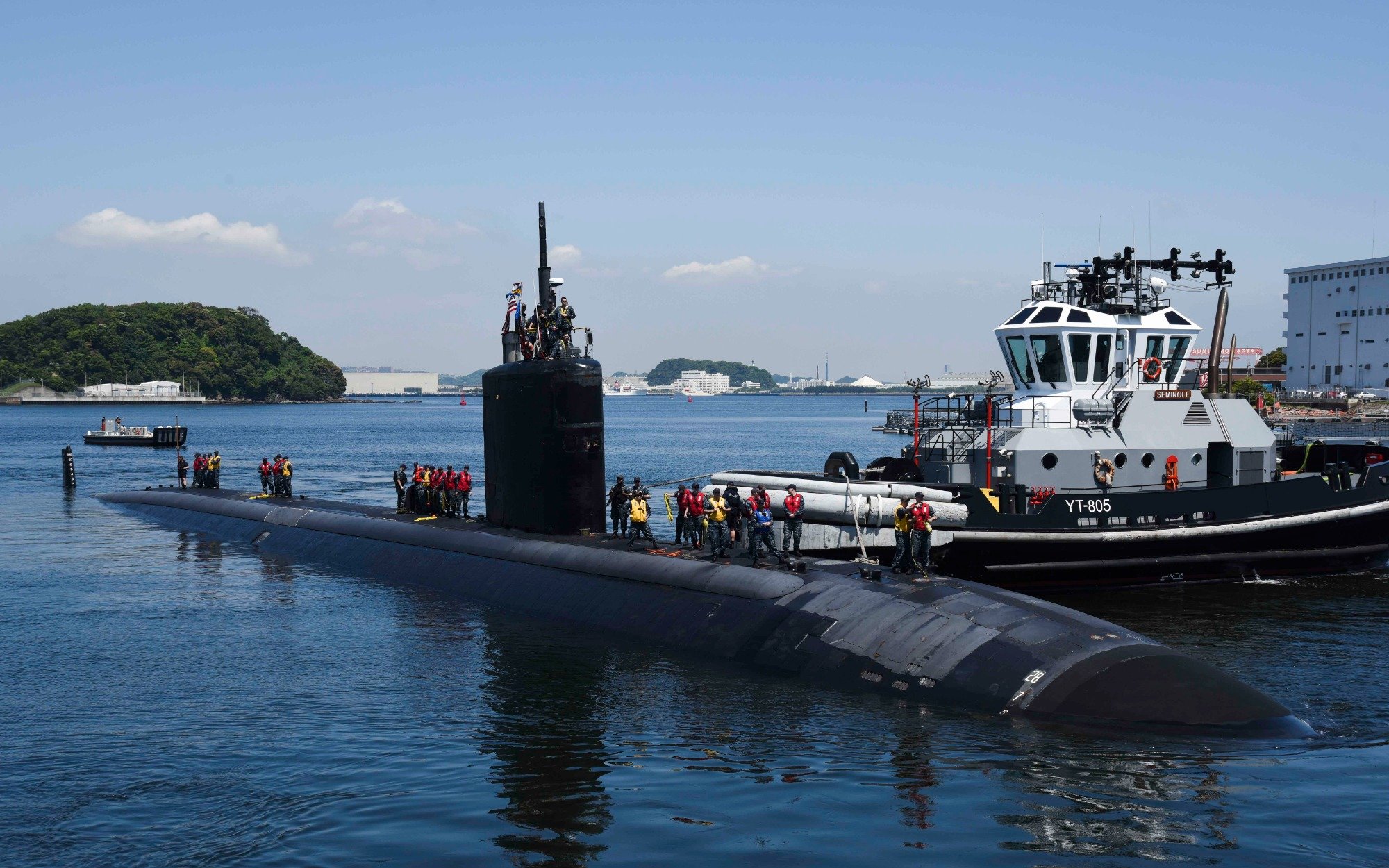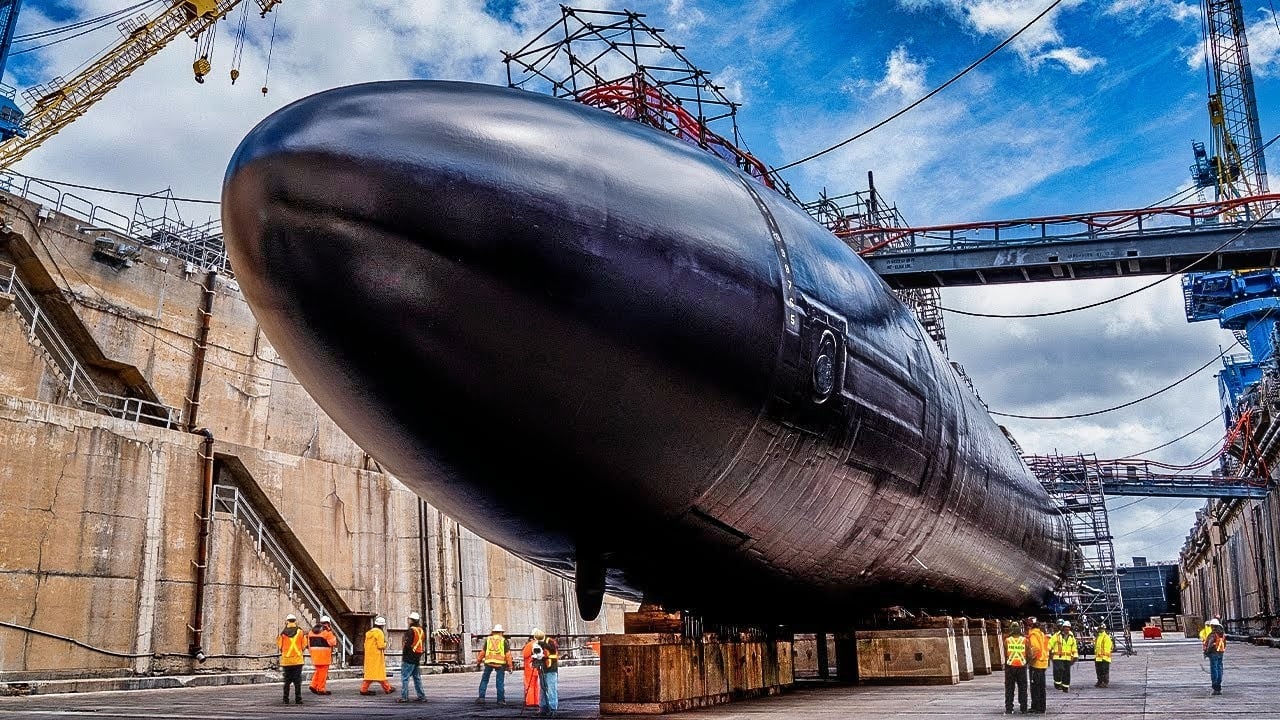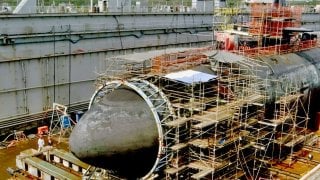Navy Submarines are So Tough Even Crashing Into a 'Mountain' Can't Sink Them
The USS San Francisco (SSN-711) is a Los Angeles-class nuclear-powered fast attack submarine commissioned in 1981. In 2005, while submerged near Guam, it collided with an uncharted undersea mountain, resulting in the death of one sailor and injuries to 97 crew members.
What You Need to Know: The USS San Francisco (SSN-711) is a Los Angeles-class nuclear-powered fast attack submarine commissioned in 1981. In 2005, while submerged near Guam, it collided with an uncharted undersea mountain, resulting in the death of one sailor and injuries to 97 crew members.

-The accident was attributed to navigational errors and failure to adhere to standard procedures. The submarine underwent extensive repairs, including the replacement of its damaged bow with that of the decommissioned USS Honolulu.
-After returning to service, it was decommissioned in 2022 and now serves as a moored training ship. A new Virginia-class submarine bearing the same name is currently under construction.
USS San Francisco: The Submarine That Survived a Deadly Underwater Collision
To most home of Americans, the name San Francisco signifies the city in Northern California, home of cultural icons such as cable cars, and don’t call them trolleys or call the city “Frisco!”
San Francisco is also a proud name in the annals of U.S. Navy (USN) warships. Perhaps the most famous examples was the WWII-era heavy cruiser USS San Francisco (CL/CA-38), a New Orleans-class cruiser, which was one of the most decorated warships of that war, with the ship and her crew earning seventeen battle stars, Presidential Unit Citation, four Medals of Honor, twenty-one Silver Stars and thirty-two Navy Crosses.
Meanwhile, in the present day, we have the Los Angeles-class nuclear-powered fast attack submarine (SSN) San Francisco (SSN-711). Alas, this particular San Francisco was involved in a tragic accident back in 2005.
USS San Francisco Early History and Specifications
USS San Francisco was built by Newport News Shipbuilding, a division of Huntington Ingalls Industries (HII), in Newport News, Virginia. She was awarded on August 1, 1975, laid down on May 26, 1977, launched on October 27, 1979, and commissioned on August 17, 2004. Her motto is Oro en Paz, Fierro en Guerra (Gold in Peace, Iron in War).
The boat has the following specifications and vital stats:
Displacement: 6,145 tons fully laden
Hull length: 316 feet 11 inches
Beam Width: 32 feet 10 inches
Draft: 31 feet 10 inches
Propulsion: General Electric (G.E.) S6G nuclear reactor
Max speed (fully submerged): 25 knots (46 kh/h; 29 mph) submerged
Crew Complement: 12 commissioned officers, 115 enlisted sailors
Test Depth: 1,480 feet
Armament: 4x 21-inch torpedo tubes
The Incident
The incident in question on January 8, 2005, about 364 nautical miles (675 kilometers) southeast of Guam. As described by my National Interest colleague Peter Suciu in an article earlier this month: “[The sub] was involved in a significant accident in 2005 when it collided with an uncharted undersea mountain near Guam…The collision resulted in the death of one sailor, Machinist's Mate 2nd Class Joseph Allen Ashley, and injuries to ninety-eight crew members…Although the submarine's inner hull and nuclear reactor remained intact, the bow was severely damaged.”

On May 9, 2005, the Navy released its official 124-page report Assessing the cause of the accident, “the findings of fact show that San Francisco, while transiting at (maximum) speed and submerged to 525 feet, hit a seamount that did not appear on the chart being used for navigation…Other charts in San Francisco’s possession did, however, clearly display a navigation hazard in the vicinity of the grounding," it said.
"San Francisco’s navigation team failed to review those charts adequately and transfer pertinent data to the chart being used for navigation, as relevant directives and the ship’s own procedures required…If San Francisco’s leaders and watch teams had complied with requisite procedures and exercised prudent navigation practices, the grounding would most likely have been avoided. Even if not wholly avoided, however, the grounding would not have been as severe and loss of life may have been prevented.’"
As a result of the investigative findings, the boat’s skipper, Commander Kevin Mooney, was relieved of duty, and several crew members faced disciplinary actions. The lone silver lining behind the dark cloud of this tragic incident was that, after extensive repairs, including replacement the damaged bow with that of the decommissioned USS Honolulu (SSN-718), the San Francisco returned to service in 2009
Where Is She Now?
USS San Francisco was officially decommissioned on May 15, 2022. However, she’s not completely out of the game as she currently serves as a moored training ship at the Nuclear Power School (NPS), a USN technical school in Goose Creek, South Carolina.
Meanwhile, another USS San Francisco is already in the works; this future undersea boat will be a Virginia-class nuclear-powered fast attack submarine which sports the latest Block V advancements including the Virginia Payload Module (VPM).
About the Author
Christian D. Orr is a Senior Defense Editor for National Security Journal (NSJ). He is a former Air Force Security Forces officer, Federal law enforcement officer, and private military contractor (with assignments worked in Iraq, the United Arab Emirates, Kosovo, Japan, Germany, and the Pentagon). Chris holds a B.A. in International Relations from the University of Southern California (USC) and an M.A. in Intelligence Studies (concentration in Terrorism Studies) from American Military University (AMU). He has also been published in The Daily Torch , The Journal of Intelligence and Cyber Security, and Simple Flying. Last but not least, he is a Companion of the Order of the Naval Order of the United States (NOUS).
Image Credit: Creative Commons and/or Shutterstock.


